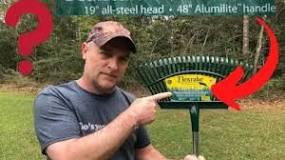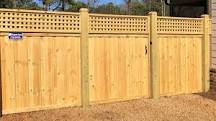A dethatcher blade works by using a series of sharp, spring-loaded tines to pull up thatch from your lawn, effectively aerating the soil and promoting healthier grass growth. In simple terms, it’s like giving your lawn a good comb-through!
What is Thatch?
Before diving into how dethatcher blades work, let’s chat about thatch. Thatch is that layer of dead grass, roots, and organic matter that builds up on the soil surface. A little bit is okay; it can even help retain moisture. But too much? That’s when you start running into problems. It can suffocate your grass, making it hard for water and nutrients to reach the soil.
How Dethatcher Blades Operate
Dethatcher blades are designed to tackle this issue head-on. Here’s how they do their thing:
1. Tine Design
The heart of a dethatcher blade is its tines. These are usually made of metal and are designed to penetrate the thatch layer without damaging the grass roots below. The tines are spring-loaded, which means they flex as they dig into the ground, allowing them to pull up thatch effectively.
2. Vertical Cutting Action
When you run a dethatcher over your lawn, those tines move in a vertical motion. This action slices through the thatch layer, pulling it up and out of the soil. Think of it as raking but way more efficient! The dethatcher essentially lifts the debris to the surface where it can be easily collected or left to decompose naturally.
3. Aeration Benefits
As the dethatcher pulls up thatch, it also aerates the soil. This means more air, water, and nutrients can reach your grass roots. Healthier roots lead to a greener lawn! Plus, aeration helps reduce compaction, which is another sneaky enemy of healthy grass.
When to Use a Dethatcher
Timing is everything! The best time to dethatch your lawn is during its active growing season—typically in early spring or early fall. This way, your grass has time to recover and thrive after dethatching.
Summary
In a nutshell, a dethatcher blade works by using sharp tines to pull up thatch while aerating your lawn at the same time. It’s an essential tool for maintaining a healthy yard and ensuring your grass gets all the love it needs from Mother Nature.
FAQ
How often should I dethatch my lawn?
It really depends on your lawn’s condition and the type of grass you have. Generally speaking, most lawns benefit from dethatching every 1-3 years. If you notice a thick layer of thatch (more than half an inch), it’s probably time to get that dethatcher out!
Can I dethatch my lawn myself?
Absolutely! If you’re up for some DIY yard work, you can rent or buy a dethatcher from most garden centers or home improvement stores. Just make sure to follow the instructions carefully for best results.
Will dethatching kill my grass?
Not if done correctly! Dethatching can actually improve your lawn’s health by allowing more air and nutrients to reach the roots. Just be mindful not to overdo it—too aggressive dethatching can stress your grass.
What should I do with the debris after dethatching?
You have a couple of options here! You can rake up the debris and compost it or leave it on the lawn as mulch. If you choose to leave it, just make sure it’s not too thick; otherwise, it could smother your grass.







